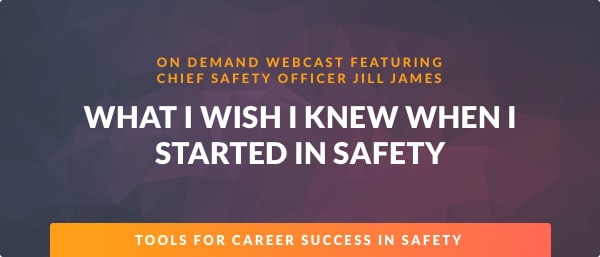Lessons from a Life in Safety: #4

Collaborate, Don’t Separate!
Be on the lookout for collaborative opportunities early and often.
Two jobs ago, I managed to get myself a ‘seat at the table’ of the weekly operations meeting.
I had become a trusted advisor to the manager who lead the operations team, so he allowed a few minutes each week to talk about safety issues.
The safety portion of the regular meeting—my time—evolved into weekly safety assignments for each member of the group of 20. Each person took turns sharing at least one thing they did to improve safety that week.
Asking “Tell me more” about personal safety assignments, lead to discovery of similar safety issues elsewhere in the organization and dialogue on preventive solutions—this was highly productive.
The collaboration was rich in that environment, and rare.
That weekly discourse—however brief—built trust, so that when stuff went sideways with teams who worked around the clock, those leaders felt safe asking me for help day or night.
My safety role with that organization fell within the Human Resources department.
That HR department was handed the momentous task of administering an employee survey, in-person, at locations across the country. This big opportunity coincided with my need to deliver hazard communication (HAZCOM) training to employees and organize a corporate-wide flu shot campaign.
Collaboration on this major objective made a ton of sense. Our department decided to pull employees together once to accomplish three things: hazard communication training, delivery of flu shots, and survey deployment. The operations managers loved the approach—taking employees away from work just one time rather than on three separate occasions.
At your organization now, I believe collaboration offers you three things:
- Helps you stay out of the stereotype, “That’s safety’s job”. And if you are working with other teams and getting yourself a seat at someone’s table, or are teaching people to “fish” for safety, you are distributing the load and helping people see that safety isn’t a solo operation.
- It helps you get budget! In the 23 years I’ve been at this work, I’ve never had a budget. Many of you listening now don’t have a budget. If you are collaborating with managers and departments who have budgets, you will be able to go to them when there is a need for a capital safety improvement that they could add to their budget. Having ongoing established and trusting relationships with other leaders will help you find money when you need it.
- Let’s face it, safety isn’t sexy until stuff hits the fan, then everyone needs something from you. Stuff will hit the fan, and when it does, you’ll need those collaborators to come alongside you.
In addition to internal collaboration where you work, look to collaborate outside of where you work and with other safety professionals. Many of you listening today are alone at work—like me, you are the only person where you work with your safety job title. It’s important that you have collaborators in safety with whom you can ask questions or get advice.
That’s the great thing about safety; our work isn’t proprietary and since there are so few of us, we are always willing to share what we have.
If you’re looking for connections, there are many safety groups on LinkedIn. Collaboration helps your professional development and builds connections you’ll need when you’re ready to move on to your next opportunity.
Forge connections with safety peers and organizational teammates early and often.




